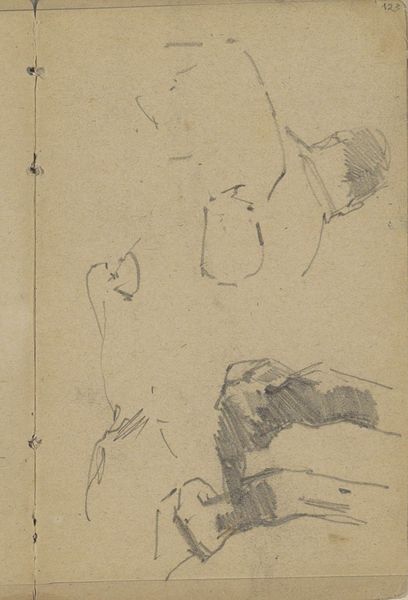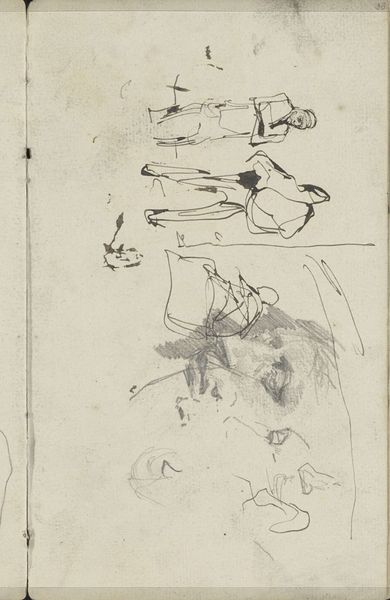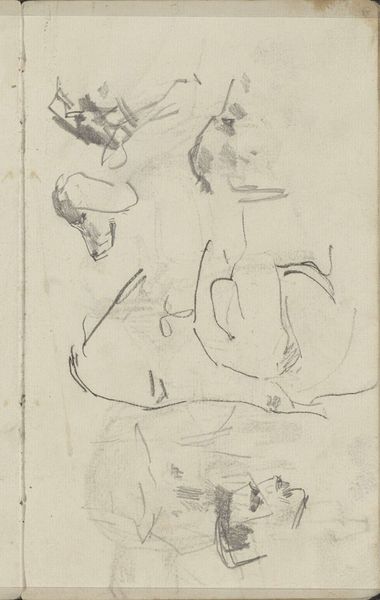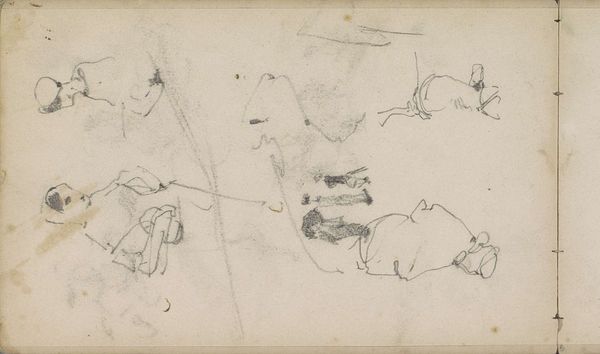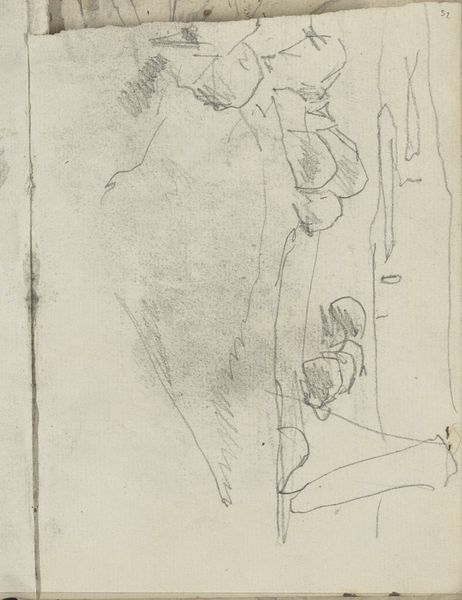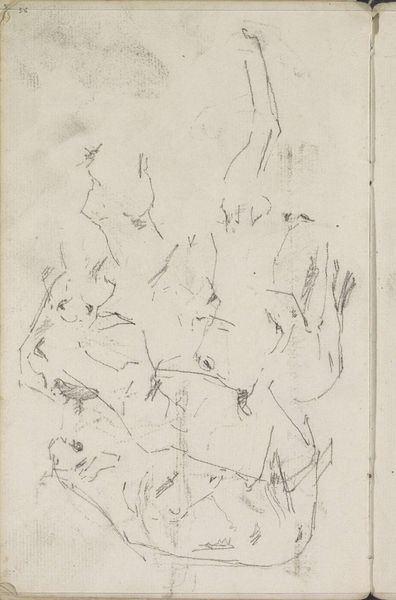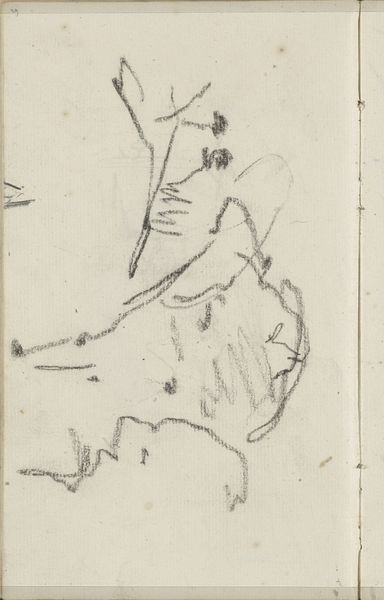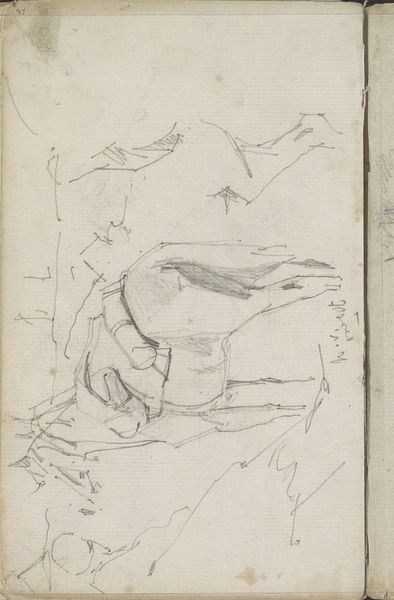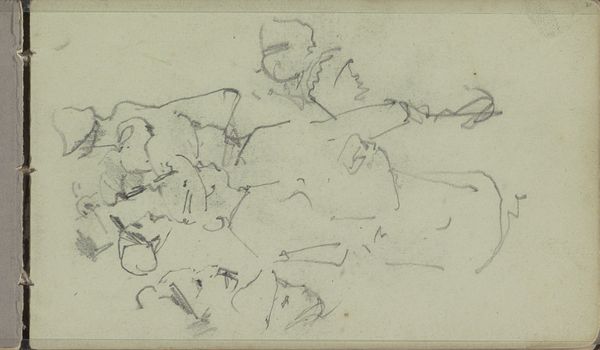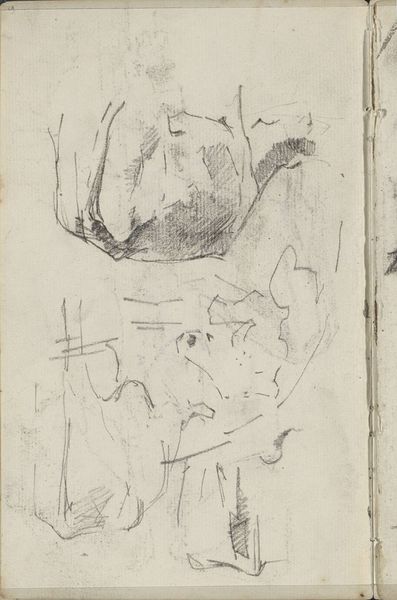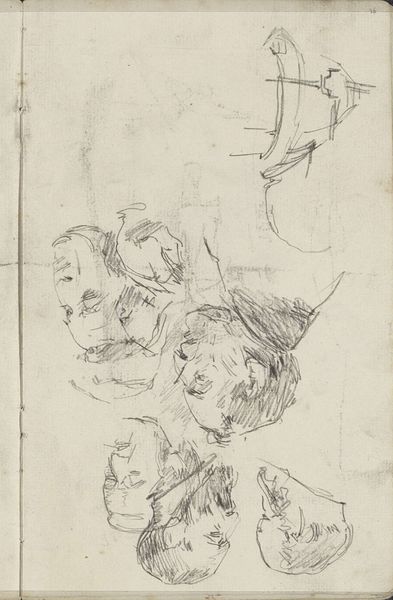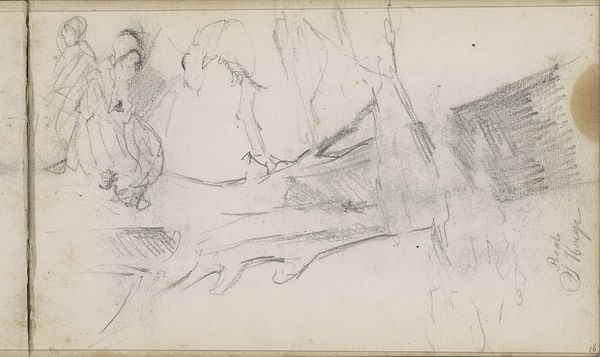
drawing, paper, pencil
#
portrait
#
drawing
#
amateur sketch
#
impressionism
#
pencil sketch
#
incomplete sketchy
#
figuration
#
paper
#
personal sketchbook
#
sketchwork
#
ink drawing experimentation
#
pen-ink sketch
#
pencil
#
sketchbook drawing
#
genre-painting
#
sketchbook art
#
realism
#
initial sketch
Copyright: Rijks Museum: Open Domain
Editor: Here we have George Hendrik Breitner's "Figuurstudies" from 1880-1882, a pencil drawing on paper currently residing in the Rijksmuseum. It feels incredibly intimate, like we’re peering into the artist’s personal sketchbook. What sort of visual language speaks to you from this piece? Curator: What strikes me is how these quick, almost unconscious marks reveal deeper cultural narratives. These sketches, these "figure studies," are not merely about capturing likeness. Breitner is part of a cultural movement, shifting from idealized forms to capturing fleeting, realistic moments. The pencil line itself becomes a signifier of immediacy and authenticity, qualities valued by the emerging Impressionist and Realist movements. Editor: So, it's almost like the act of sketching becomes part of the meaning? Curator: Precisely! Think about what is *not* shown. These incomplete figures suggest movement, transience, life happening *around* them. It reminds us that identity and form were being explored, deconstructed even. What psychological implications might you find in these fragmented portraits? Editor: Perhaps it shows an interest in portraying real people in modern society, unpolished and on the go, rather than these staged formal portraits. Like, they’re not just *anyone*; they feel very specific. Curator: Yes! Breitner’s work, while unfinished in some sense, mirrors the rapidly changing social landscape of the late 19th century, as art moved towards democratized subjects and immediacy. There is an honest immediacy. And notice the lack of detail? That echoes larger societal anxieties of fleeting modern experiences that elude precise categorization. It makes us ponder what visual fragments remain imprinted upon cultural memory. Editor: It's fascinating how something so simple can hold so much historical weight. Thanks, that really broadened my perspective. Curator: My pleasure. These “incomplete sketchy” images are rich vessels for contemplating societal identity, I look forward to future explorations of historical context together.
Comments
No comments
Be the first to comment and join the conversation on the ultimate creative platform.
